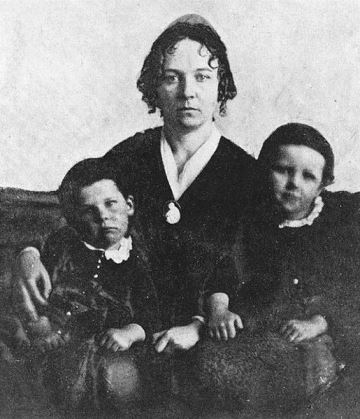THE TAKE AWAY
Feminist for Life 1: The History of the Feminist Movement
By Kersley Fitzgerald

Colorado Springs recently hosted the second Life and Justice Conference. I wasn't able to go to many of the sessions, but I did make a particularly intriguing one: Serrin Foster, Feminists for Life: The Feminist Case against Abortion.
Feminists for Life is a nonsectarian, nonpartisan organization that firmly believes abortion is completely counter to everything feminism stands for. Their definition of feminism is rather broad—"a philosophy that embraces basic rights for all human beings without exception—without regard to one's race, religion, sex, size, age or location, disability or parentage" (Serrin Foster, "The Feminist Case against Abortion"). Foster began with a fascinating history of the feminist movement.
Feminist Origins
The assertion that suffragists do not care for children and prefer notoriety to the joys of maternity is so fully contradicted by the lives of the women who are trying to make the world a safer place for both sons and daughters, that no defense is needed. Having spent my own life from fifteen to fifty, loving and laboring for children, as teacher, nurse, storyteller and guardian, I know whereof I speak. - Louisa May Alcott
What does the feminist movement and pro-life stances have to do with each other? One was informed by the other. Feminism, in large part, came about because of the abusive and exploitative culture that encouraged women to have abortions. This culture treated women as little more than accessories who were not allowed to have a voice or financially support themselves or their children.
Feminism began in the mid-1800s as one of several movements to support human rights. Many of the original feminists started as abolitionists. Gradually, the women saw the parallel between slavery and their own lives—in fact, Louisa May Alcott referred to women as the "white slaves of America." Women had no right to vote, no right to own property, and even no legal right to retain custody of their own children in the case of divorce or their husband's death. Abortion was a significant part of this life. If a woman, powerless in her own life, was not in a situation where her unborn child could be supported, it was very common for her to seek an abortion. It felt like the only choice.
Susan B. Anthony is known for her work as a suffragist, but one of the reasons she wanted women to have political power was so they could enact laws that gave them the right to their own children. In that day, if a woman's husband died while she was pregnant, her child could be taken from her and given to a family of his choosing. Anthony's response: "Sweeter even than to have had the joy of caring for children of my own has it been to me to help bring about a better state of things for mothers generally, so that their unborn little ones could not be willed away from them."
When a man steals to satisfy hunger, we may safely conclude that there is something wrong in society—so when a woman destroys the life of her unborn child, it is an evidence that either by education or circumstances she has been greatly wronged. - Mattie Brinkerhoff
The leaders in the early feminist movement believed it was unacceptable that a woman would have to sacrifice her greatest gift—her ability to bring new life—in order to fit within the culture or even survive. It was time for culture to change to accommodate women. Susan B. Anthony called abortion "child murder" and "infanticide," and put it in the same category as murder and rape:
The prosecutions on our courts for breach of promise, divorce, adultery, bigamy, seduction, rape; the newspaper reports every day of every year of scandals and outrages, of wife murders and paramour shooting, of abortions and infanticides, are perpetual reminders of men's incapacity to cope successfully with this monster evil of society.
The feminist movement today conjures up images of bra-burning and shattered glass ceilings. But early feminists had broader intents than helping women break into the world of men. They wanted the world to celebrate women. Elizabeth Cady Stanton did this in a way that shocked her community to the core: she celebrated pregnancy and the births of her children, often to the extent that her activist activities took a backseat to caring for her children. But, in an inspiring example of what women could do and be, she often called her good friend, the childless Susan B. Anthony, to babysit while she worked.
Stanton's activism was informed by her role as mother. She fought for the right for women to own property so they could provide for their children if the father died. She fought for the right for women to vote so their voice could be heard and society could recognize the needs of mothers and their children. She was convinced that mothers had an irreplaceable role in public policy—who better to ensure the laws of the land support the needy and work against war, poverty, and other injustices? Abortion was a symptom of the abuses women faced in the sexist culture. As she wrote to Julia Ward Howe, the originator of Mother's Day:
When we consider that women are treated as property, it is degrading to women that we should treat our children as property to be disposed of as we see fit.

Part 2: The History of Abortion and Feminism
Image Credit: Unknown; Library of Congress; "Cady Stanton"; Public Domain
comments powered by Disqus
Published 5-7-13

